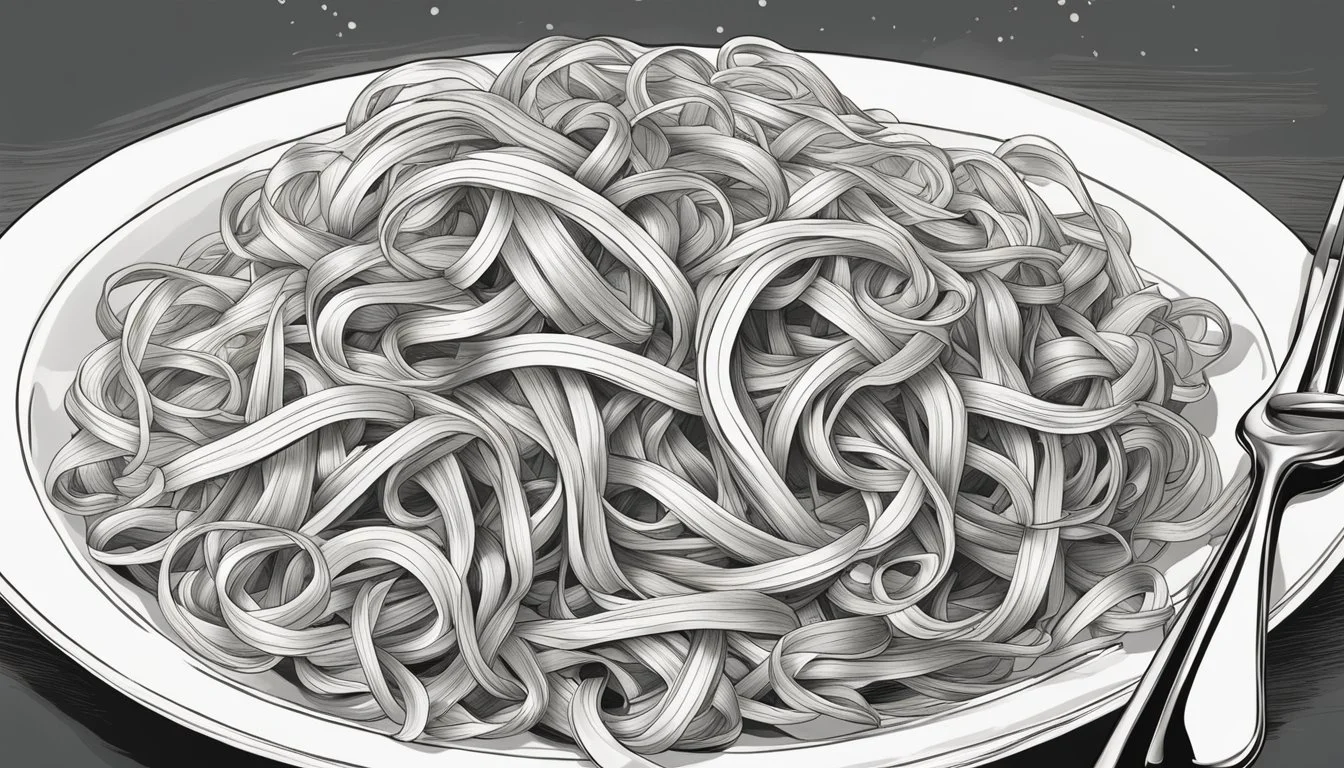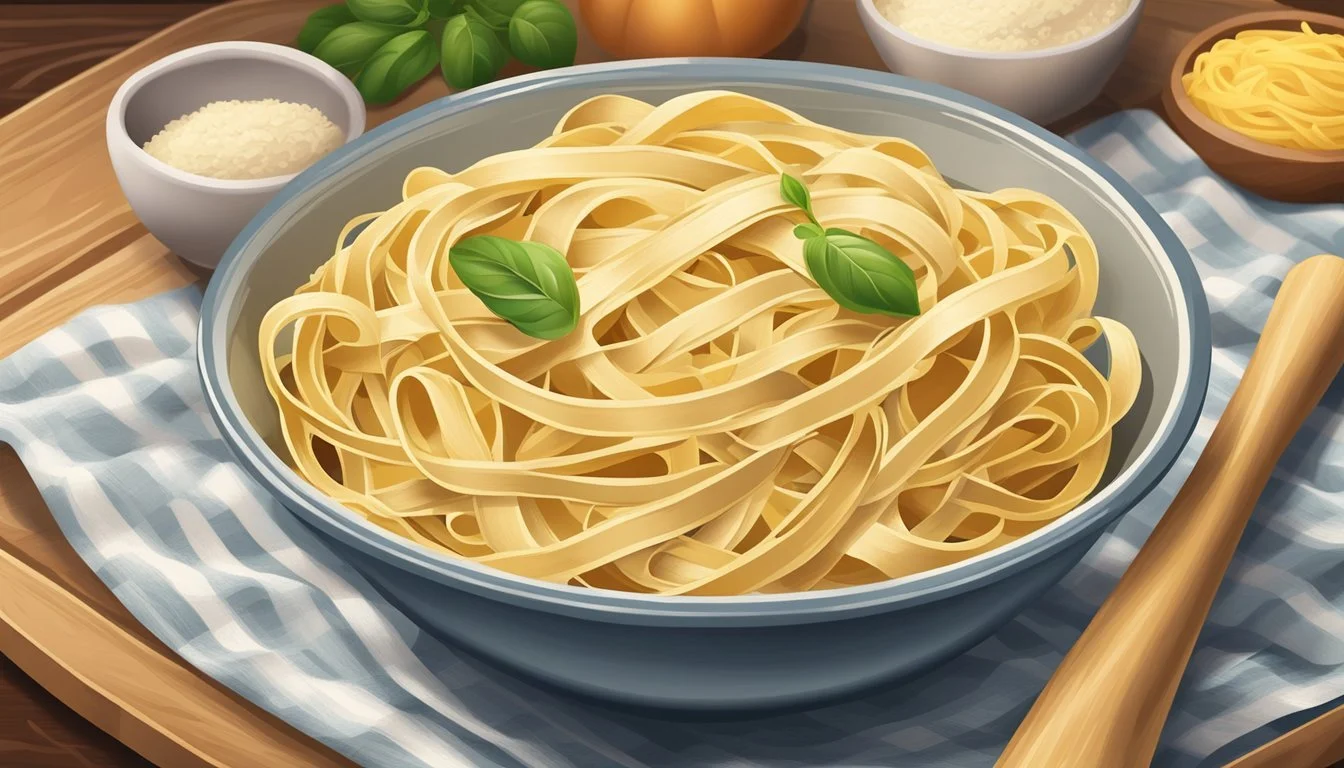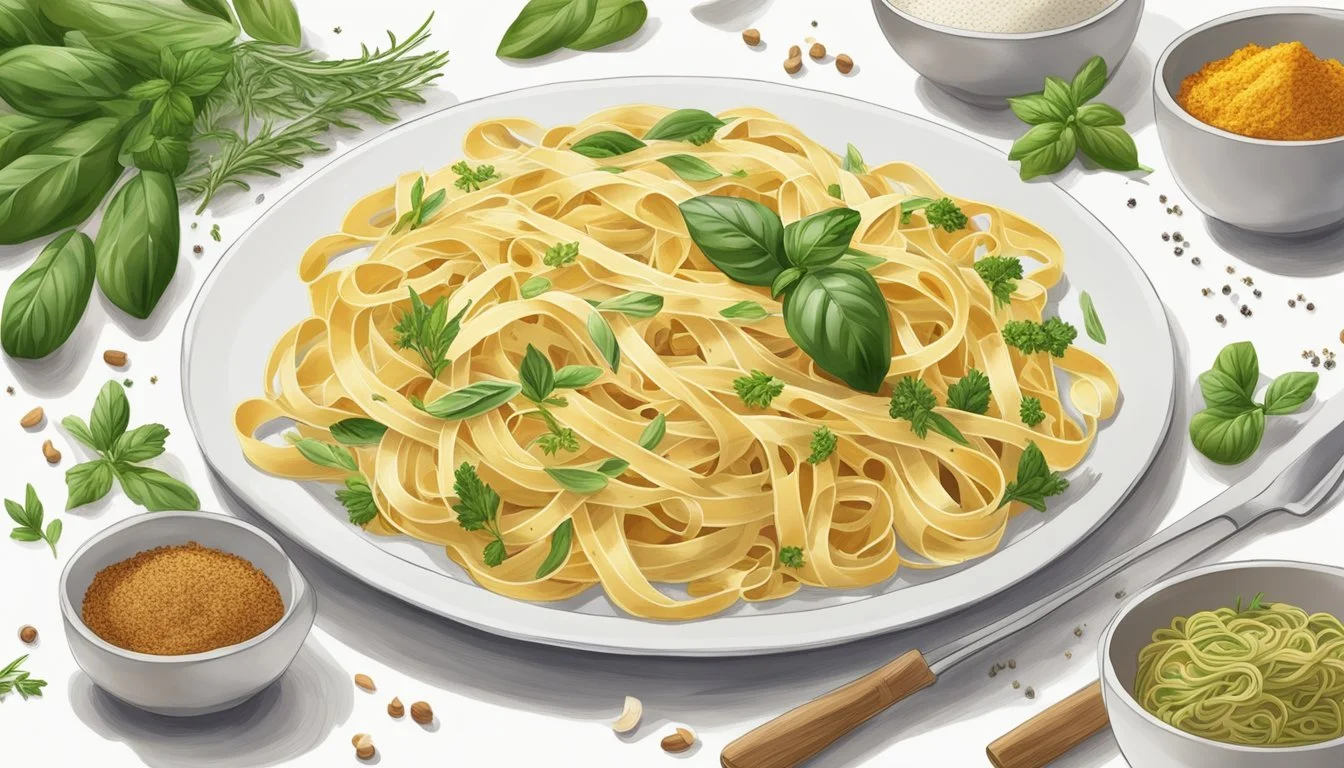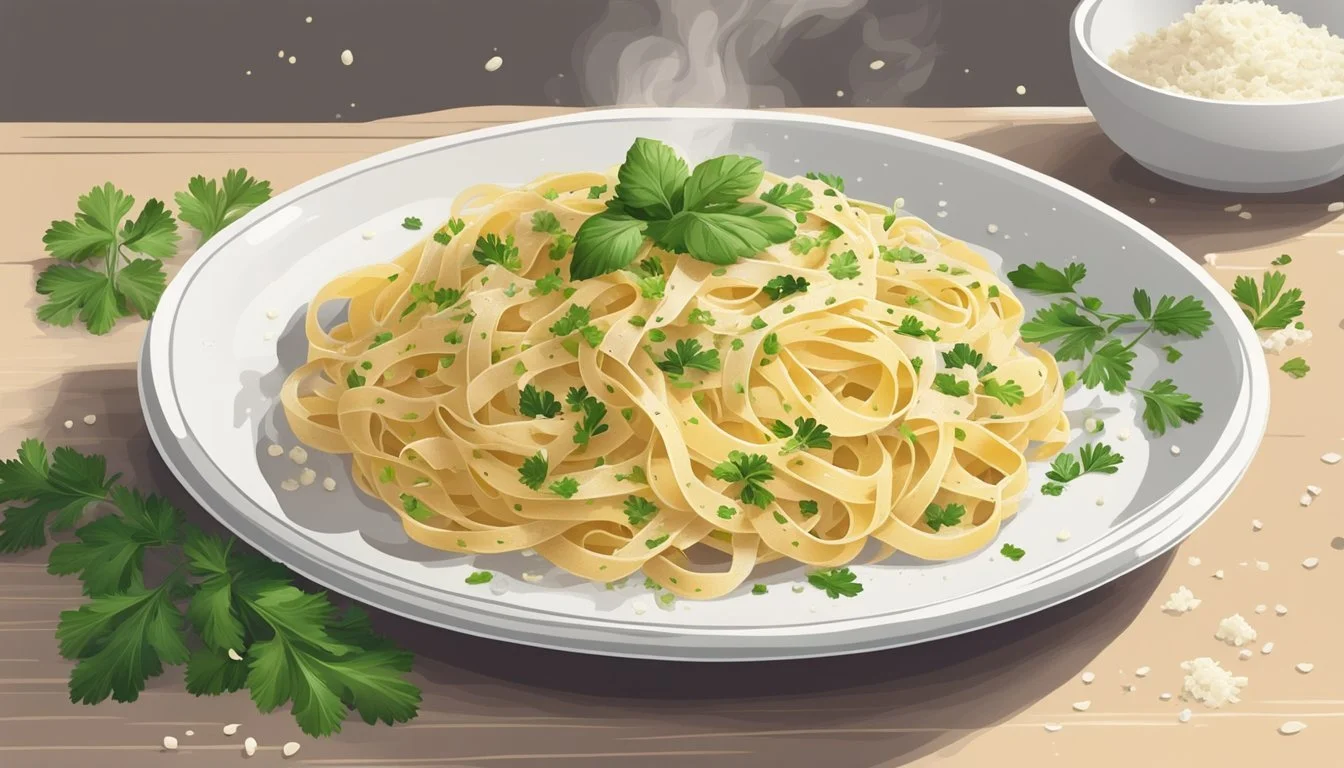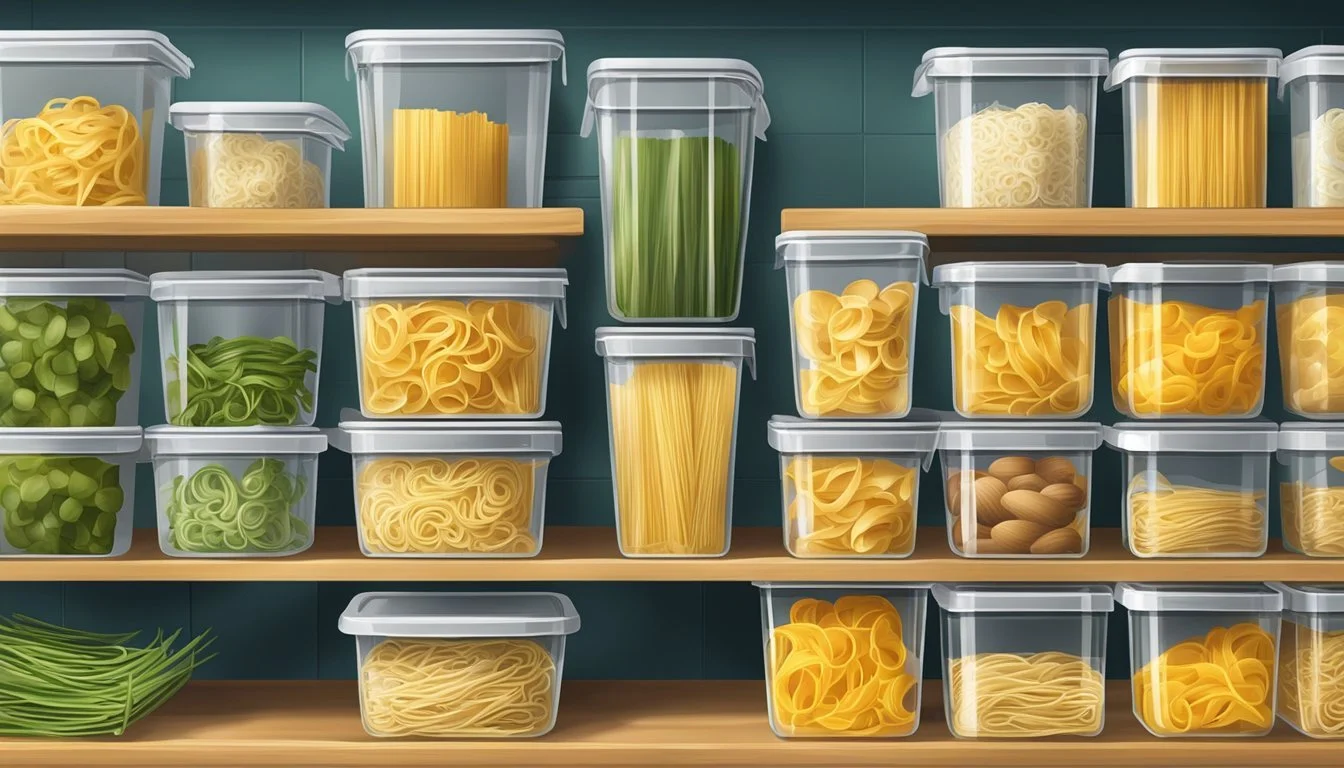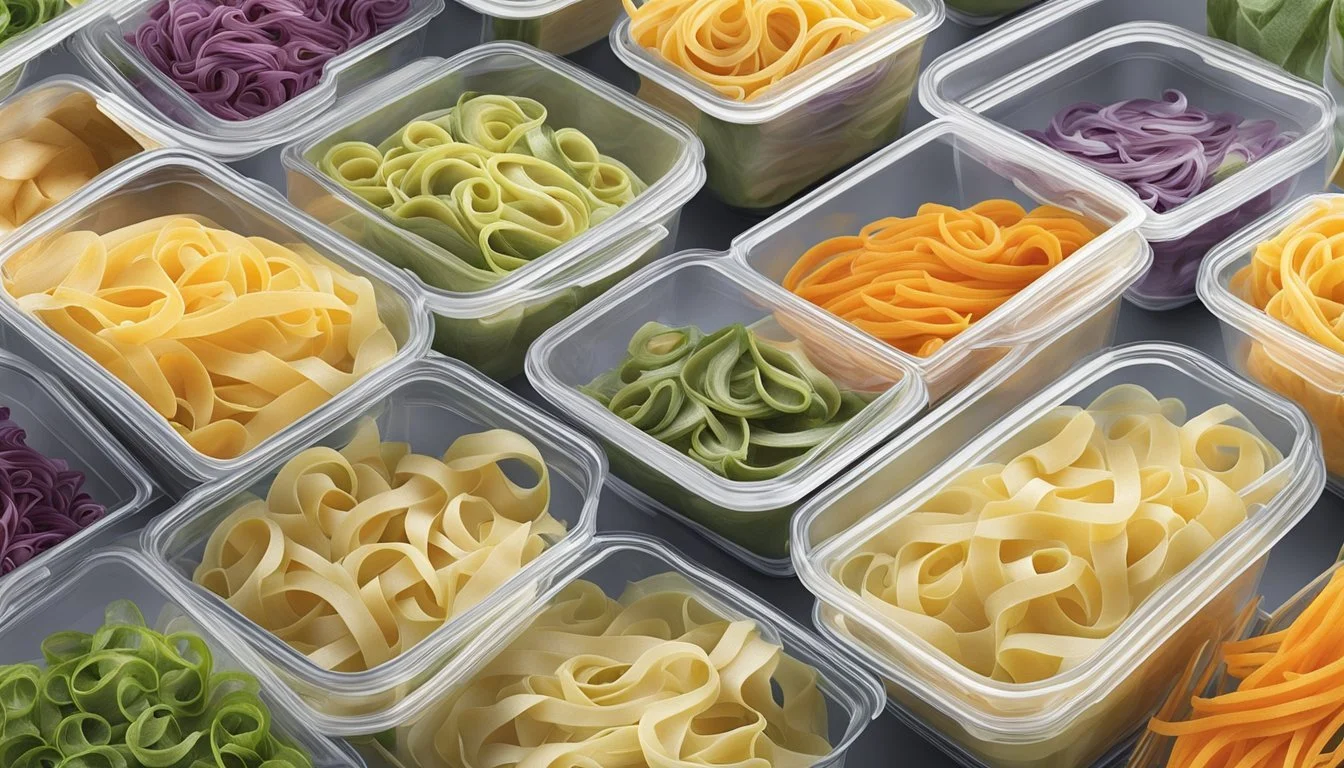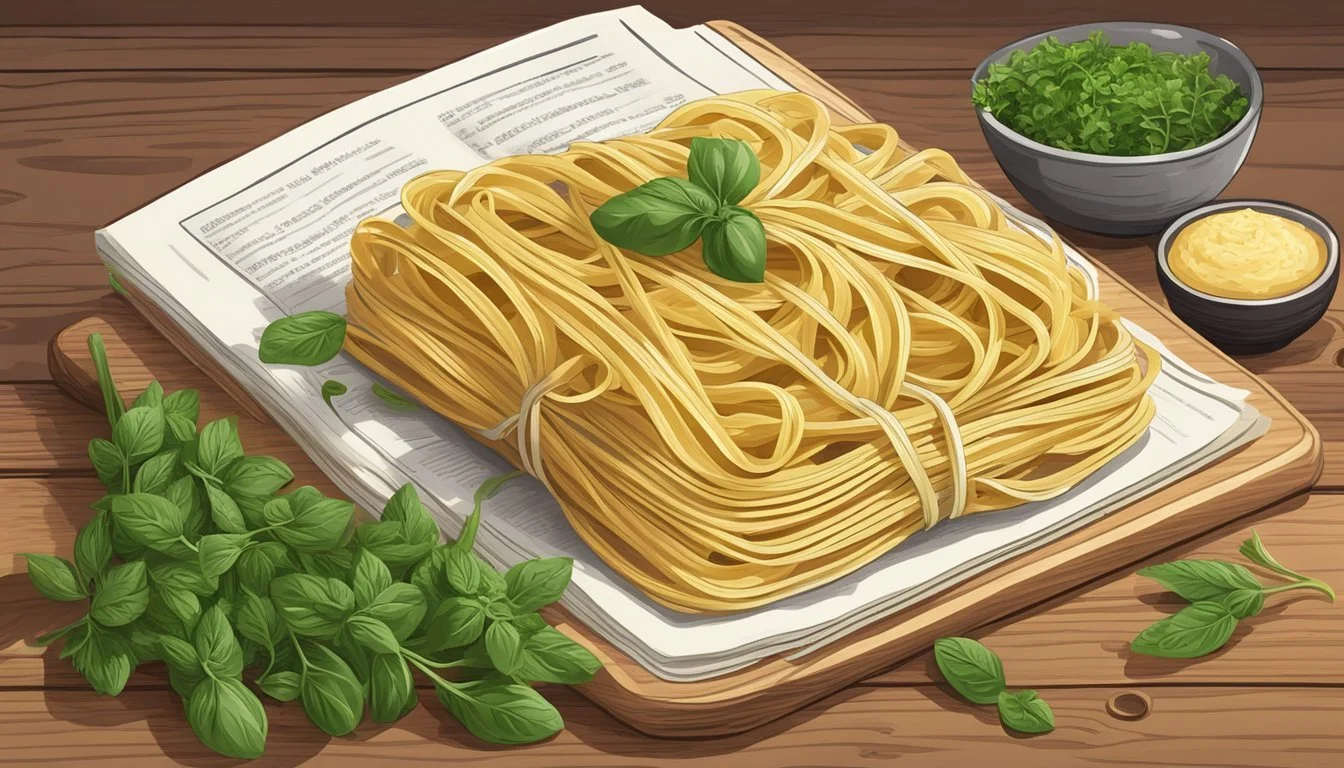How Long Does Freshly Prepared Fettuccine Last?
Shelf Life and Storage Tips
When it comes to the shelf life of freshly prepared fettuccine, understanding proper storage techniques and food safety is crucial. Fresh pasta (What wine goes well with pasta?), like fettuccine, typically has a shorter shelf life due to its higher moisture content compared to dried pasta. Without the preserving effects of dehydration, fresh fettuccine can become a breeding ground for bacteria if not stored correctly. Fresh fettuccine should be consumed within 1-3 days when refrigerated in an airtight container. Its delicate texture and taste are best enjoyed shortly after preparation, ensuring the highest quality and safety.
The refrigeration of cooked fettuccine extends its shelf life, allowing it to remain safe to eat for 3-5 days. The key to maximizing this duration is to cool the pasta rapidly after cooking and to store it properly in airtight containers, thus slowing down the growth of potential bacteria. As food safety is paramount, it is recommended to be vigilant about these time frames and to inspect the pasta before consumption for any signs of spoilage, which includes changes in texture, smell, and color.
In the case of freezing, freshly prepared fettuccine can last much longer. Freezing inhibits bacterial growth and can extend the shelf life of fresh pasta for several weeks. To properly freeze fettuccine, it should be blanched briefly in boiling water, cooled, and then laid out to dry slightly before being placed on a baking sheet and into the freezer. Once frozen, the pasta should be transferred to a sealed container or a freezer bag to prevent freezer burn. This method preserves the pasta’s quality, making it a convenient option for those looking to enjoy homemade fettuccine at a later date.
Understanding Fresh Pasta
Fresh fettuccine is a beloved staple in Italian cuisine known for its delicate texture and quick cooking time. Its quality and shelf life are influenced by ingredients and storage methods.
Characteristics of Fresh Fettuccine
Fresh fettuccine pasta stands out for its soft, pliable texture, which can be attributed to a higher moisture content when compared to its dry counterpart. When made at home, it generally comprises simple ingredients: flour, eggs, and water. The absence of preservatives means that homemade pasta usually lasts for one to two days in the refrigerator.
Differences Between Fresh and Dry Pasta
The main difference between fresh and dry fettuccine lies in moisture content and shelf life. Dry pasta, often made without eggs, is more durable and has a shelf life of 1 to 2 years when properly stored. On the other hand, fresh pasta, especially if homemade, has a much shorter life span due to its higher moisture level and the presence of eggs.
The Role of Ingredients in Fresh Pasta
Fresh pasta typically uses wheat-based flours which are rich in gluten, giving the pasta its strength and elasticity. For those with dietary restrictions, gluten-free pasta options are available, often made with flours from rice, corn, or other grains. These gluten-free variants may have a different texture and flavor profile, as well as distinct storage requirements due to their unique composition.
Storage Fundamentals
When storing freshly prepared fettuccine, the longevity of the pasta hinges on maintaining ideal conditions, regulating temperature and humidity, and choosing appropriate storage containers to preserve its quality.
Ideal Storage Conditions
Fresh fettuccine pasta should be kept in an airtight container or a resealable ziplock bag to protect it from moisture and other contaminants. For best results, one should refrigerate freshly made fettuccine if it's intended to be used within a short period, ranging from 1-3 days.
Effects of Temperature and Humidity
Temperature and humidity play crucial roles in the shelf life of fresh fettuccine. The pasta should not be stored at room temperature, as it is susceptible to bacteria growth. Refrigeration is essential, providing a cold environment that slows down bacterial development. The fridge should maintain a consistent temperature, ideally below 40°F (4°C). Humidity can cause the pasta to become soggy or moldy, thus, a low-humidity setting in the fridge is preferable.
Choosing the Right Containers
Ensuring pasta is stored in the right type of container will greatly extend its shelf life. Fresh fettuccine should be placed in airtight containers or resealable containers such as ziplock bags, which prevent air circulation and the intrusion of moisture. If one opts to freeze the pasta, it should be first spread out on a baking sheet to freeze individually and then transferred to a freezer-safe airtight container or bag, effectively preventing freezer burn and clumping.
Maximizing Shelf Life
Proper storage is critical for maintaining the freshness and extending the shelf life of fresh fettuccine. Attention to detail in the storage process can prevent premature spoilage and minimize the risk of foodborne illnesses caused by bacteria and mold.
Tips to Extend Freshness
Refrigeration: Fresh fettuccine should be refrigerated promptly. It's best used within 4 to 5 days when stored in the refrigerator. To extend its shelf life further, one can freeze fresh fettuccine, which can last for about 1 to 2 months.
Packaging: Always store in air-tight containers or tightly sealed freezer bags to prevent freezer burn and odor absorption.
Temperature: Keep at a constant 0°F or lower when freezing and below 40°F in the refrigerator.
Indicators of Spoilage
It's essential to know how to identify if fresh fettuccine has gone bad to ensure food safety.
Smell: A sour or off odor is a strong indicator that the fettuccine is no longer safe to eat.
Visual Cues: Look for any signs of mold or discoloration on the pasta. Presence of mold indicates bacterial growth and spoilage.
Expiration Date: Take note of the expiration date on packaged fettuccine as a guide; if it's past this date, even if there are no visual spoilage cues, it's best to discard the pasta.
Freezing and Defrosting Pasta
Freezing pasta provides a convenient solution for long-term storage, while defrosting techniques ensure the quality of pasta is preserved for future meals.
How to Freeze Fresh Fettuccine
To effectively freeze fresh fettuccine, one must first spread the noodles in a single layer on a baking sheet, lightly dusting them with flour to prevent sticking. This pre-freezing step is crucial and should last approximately 15 minutes, allowing them to dry out slightly:
Prepare the noodles: Toss the fettuccine with flour until well-coated.
Lay out to dry: Place the noodles in a single layer on a baking tray.
Pre-freeze: Allow to sit at room temperature or in the freezer briefly, ensuring partial drying.
Package for freezing: Transfer the partially dried noodles to an airtight container or a freezer bag, pressing out excess air before sealing.
Freeze: Place the sealed container or bag in the freezer.
These steps will extend the shelf life of fresh fettuccine to approximately 1 to 2 months.
Defrosting Techniques
When it comes to thawing frozen pasta, gentle and effective methods ensure that the noodles retain their texture and don't become soggy. For best results:
Refrigerate: Transfer the frozen pasta to the refrigerator the night before it is needed to allow for a slow and safe thaw.
Warm water: Submerge the sealed bag of pasta in warm water for a quick thaw if immediate cooking is desired.
Direct cooking: In some cases, frozen pasta can go directly from freezer to boiling water, but this may depend on the thickness of the pasta and personal preference.
Using these defrosting techniques ensures that leftover fettuccine is brought back to life with its intended flavor and texture intact.
Cooked Versus Uncooked Fresh Pasta
Understanding the shelf life of fresh pasta, both cooked and uncooked, is essential for maintaining its quality and ensuring food safety. Proper storage methods can significantly impact the longevity of your pasta.
Shelf Life of Cooked Fresh Fettuccine
Once cooked, fresh fettuccine should be consumed relatively quickly. It can last in the refrigerator for approximately 3 to 5 days when stored properly in an airtight container. The quality starts to decline as the pasta absorbs flavors and moisture from the fridge. It's important to let the cooked pasta cool before sealing it in the container to prevent condensation, which can lead to sogginess and bacterial growth.
Best Practices for Storing Leftover Pasta
For quality retention and safety:
Place leftover pasta in an airtight container or a sealed plastic bag.
Refrigerate at a temperature below 40°F (4°C) to slow down bacterial growth.
Consume within 3-5 days.
If one intends to use the pasta beyond this timeframe, consider freezing it. Cooked fresh fettuccine can be kept frozen for up to 2 months. Make sure to use freezer-safe containers or bags.
By following these guidelines, one ensures the longevity and safety of their cooked and uncooked fresh fettuccine.
Special Considerations
When considering the shelf life of freshly prepared fettuccine, it's important to account for variations such as stuffed or flavored pastas, as well as gluten-free options, which may have different storage requirements due to their ingredients.
Dealing with Stuffed or Flavored Pastas
Stuffed pastas, such as ravioli or tortellini, and flavored pastas that incorporate herbs or vegetables, contain additional moisture and perishable fillings. They should be consumed quicker than plain fresh pasta:
Stuffed Pasta: Refrigerate and consume within 1-2 days.
Flavored Pasta: Use or refrigerate within 1-3 days; the added ingredients may accelerate spoilage.
Fresh pastas with a higher oil content may last a bit longer but require careful storage to prevent rancidity.
Handling Gluten-Free Fresh Pasta
Gluten-free fresh pasta often incorporates alternative flours, which can influence both texture and shelf life:
Gluten-Free Fresh Pasta: Refrigerate and use within 1-2 days.
Due to the absence of gluten, which provides structure and elasticity, gluten-free pasta can be more delicate and prone to spoilage. Refrigeration in an airtight container is essential to maintain its quality.
Signs of Optimal Fresh Pasta Quality
When assessing the quality of fresh fettuccine pasta, one should examine both its visual and textural characteristics as well as its flavor and aroma. These indicators reflect the pasta's peak condition and guide on how to store fresh pasta to maintain these qualities.
Visual and Textural Clues
The appearance of high-quality fresh pasta is typically characterized by a consistent, vibrant color. It should possess a uniform, matte finish and be free of any discolorations or spots that may indicate oxidization or spoilage. When touched, the pasta should feel supple and pliable, indicating its freshness. It should not be sticky or brittle to the touch.
Flavor and Aroma Indicators
The flavor of optimal quality fresh fettuccine pasta is distinct and should taste slightly of the raw ingredients like flour and eggs. Its aroma should be subtle yet enticing, resembling fresh dough without any sour or off-putting smells. Pasta at its best quality delivers a clean and appealing scent that indicates it's been stored correctly away from strong odors and light which can degrade the product.
Alternative Pasta Storage Solutions
When considering alternative methods to prolong the freshness of homemade fettuccine, one can either employ kitchen gadgets like pasta makers and dehydrators, or optimize pantry storage for dried pasta to extend its shelf life.
Using Pasta Makers and Dehydrators
Pasta makers often feature settings to aid in the cutting and drying process of pasta. For those wishing to store their pasta longer, a pasta maker can press and cut the dough uniformly, which is crucial for even drying. Adding a dehydrator to the process further ensures that homemade pasta is dried thoroughly. Drying pasta properly allows for a stable product that can be stored indefinitely under the right conditions.
Storage Conditions:
Low humidity
Cool temperatures
Away from direct sunlight
Using a dehydrator helps in creating such an environment artificially, removing as much moisture as possible to prevent spoilage.
Pantry Storage for Homemade Dried Pasta
Once pasta is dried using a dehydrator or a pasta maker with drying capabilities, it should be stored correctly to maintain freshness. Airtight containers or vacuum-sealed bags are ideal for storing dried pasta. They prevent humidity and other environmental factors from affecting the quality of the pasta.
Pantry Storage Tips:
Store in airtight containers or vacuum-sealed bags.
Keep in a cool, dark place like a pantry cupboard.
Ensure pasta is completely dry to avoid mold growth.
Homemade dried pasta stored under these conditions can last much like store-bought pasta, offering a convenient and long-lasting solution for pasta enthusiasts.
Food Safety and Hygiene in Pasta Storage
When storing freshly prepared fettuccine, food safety and hygiene are paramount to preventing foodborne illnesses. Storage temperatures play a crucial role in determining the shelf life and safety of the pasta. It is recommended to keep fresh pasta refrigerated at a temperature below 40°F (4°C) if it is not to be consumed immediately. Fresh pasta should be placed in the fridge within two hours of preparation to avoid bacterial growth which rapidly occurs between 40°F (4°C) and 140°F (60°C).
Storage Containers:
Airtight containers
Plastic wrap
Freezer bags (if freezing)
Handling Pasta:
Use clean utensils and surfaces
Avoid cross-contamination with raw ingredients
Hygiene practices are essential throughout the preparation and storage processes. Cooked fettuccine should be handled with clean equipment, and any contact with raw food, such as eggs in the dough, must be strictly managed to avoid cross-contamination. Pasta should be cooled to room temperature before storage, but this process should not exceed the two-hour window.
Hygienic Storage Tips:
Wash hands before and after handling fresh pasta
Regularly sanitize surfaces where pasta is prepared and stored
Label the storage container with the preparation date
Proper hygiene and temperature control will ensure that fresh pasta remains safe to eat and maintains its quality. By following these guidelines, freshly prepared fettuccine can typically last for 4-5 days in the refrigerator.
Learning More: Resources and Guides
Those interested in the shelf life of freshly prepared fettuccine, as well as tips for storage and cooking, can benefit greatly from a variety of resources. Cookbooks focusing on pasta provide comprehensive knowledge, including guidance on how different sauces can affect the longevity of fresh pasta.
Online Culinary Blogs and Websites: A wealth of information can be found on culinary blogs that specialize in Italian cooking. These blogs often share insights into not only preserving fresh pasta like fettuccine but also the best sauces to enhance their flavors.
Pasta Shape Guides: For different pasta shapes, including tortellini, these guides detail cooking times and sauce pairings which are crucial to maintaining the quality of the pasta.
Cooking Classes: Enrolling in a local or online cooking class can provide hands-on experience. Instructors may offer advice on pairing pasta with the right type of beans for a nutritious meal, as well as the art of making and storing fresh pasta.
Cooking Forums and Groups: These communities are platforms where both amateurs and experts share their experiences. Here, one can learn the subtleties of creating a harmonious balance between pasta and sauce, ensuring both freshness and taste.
Resource Type Focus Area Benefit Cooking Blogs Fresh Pasta Storage They offer detailed steps and preservation tips Cooking Classes Sauce Selection Teachers provide expert sauce-pasta pairings Forums & Groups Pasta Shapes Community discussions on pasta variety
For those preparing fresh fettuccine, it's important to understand the factors that contribute to its shelf life. The choice of sauce, cooking method, and storage technique can all influence how long the pasta maintains its optimal quality. With the right guidance, one can enjoy delicious, home-made fettuccine that is both safe to eat and flavorful.

